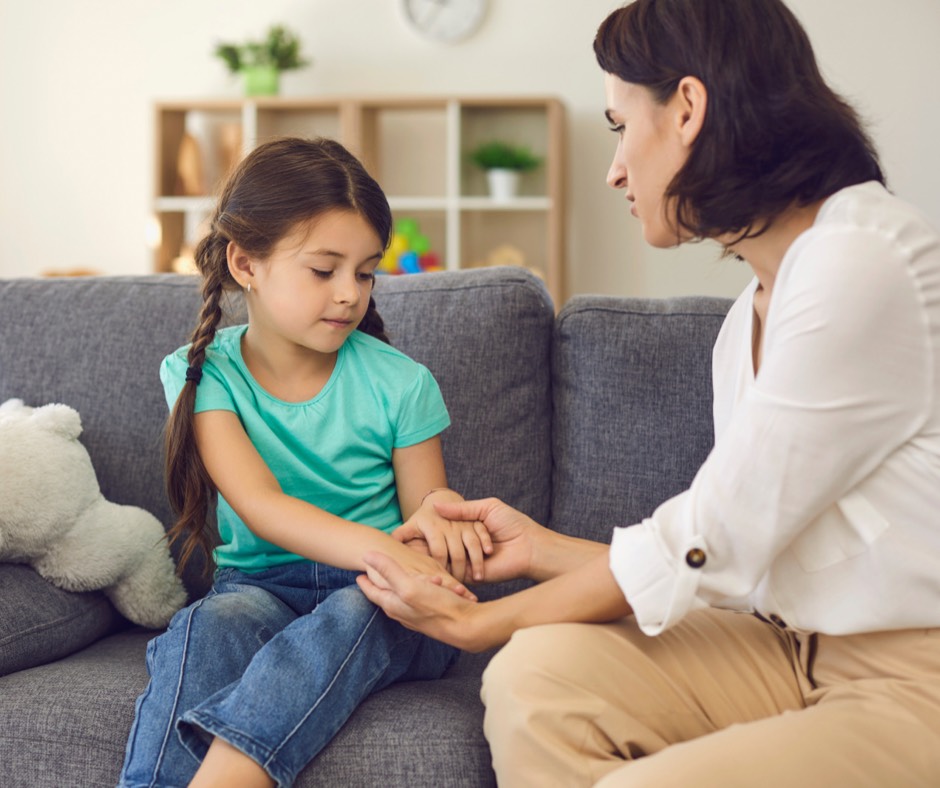

If Children are Talking About Death, How Can Parents Best Support Them?
January 6, 2022 by Counseling and Wellness Center of Pittsburgh anxiety in children, Child Anxiety, child counseling, child psychologist, child therapy, children mental health, death, health anxiety, pandemic, parenting, Parenting and Families 0 comments
In the last two years there has been a noticeable increase of school age children spending a lot of their time discussing and playing out themes of death. This can be very concerning to parents as they want to shield their children from anything that is scary and death is a heavy concept, even for adults.
With the pandemic, death has been a constant topic on the news, media, and at the dinner table. Children are more observant than adults often realize so even when they seem absorbed in their video games or pretend play, they are internalizing what is being said. The way that children explore and understand the world is different from adults. Children will process unsafe and/or new topics by playing them out with their toys. This allows them to take an unsafe topic into a safe space that they control and understand.
According to the Yale Child Study Center, “Between the ages of 5 and 7 years, children gradually begin to develop an understanding that death is permanent and irreversible and that the person who died will not return” (Child Bereavement UK, 2020, p. 2). This means that there is an entire group of children who are moving into this developmental stage of understanding death for the first time during a global pandemic. Looking at the behaviors from this lens gives an understanding to the increase in anxiety, play themes, and/or conversations around this topic for school age children.
Another important part of this developmental stage is that the child’s imagination and ‘magical thinking’ also needs to be considered and addressed when looking for ways to help children conceptualize death and decreasing the anxiety around this topic. The Yale Child Study Center goes on to say:
Children’s imagination and ‘magical thinking at this age can mean that some children may believe that their thoughts or actions caused the death, and they can feel guilt. Not being given sufficient information in age-appropriate language can lead them to ‘make- up’ and fill in the gaps of this knowledge. Children increasingly become aware that death is an inevitable part of life that happens to all living things. As a result, they become anxious about their own, and other’s, health, and safety.” (p. 2).
To summarize, children are taking on the weight of the world with this pandemic on their tiny shoulders. So it is the job of the adult to take this burden off of them. This is not to say that the adult needs to take the responsibility of a global pandemic either, because that is also an impossible task, but instead to free up the child to engage in their job of being a kid. As much as parents wish they could change the world for their child, what is in their control is making sure the child feels safe.
For example, if a young child was worried that if an acorn fell her entire family would die this would in line with magical thinking due to lack of information. Parents are then able to use this as an opportunity to use age-appropriate language to explain, without invalidating, the child’s fears. The parent is then able to say, “I can see this is something that you are very afraid of. Let’s take a deep breath together to help calm ourselves and talk about it. It’s Mommy’s/Daddy’s/Safe Grownup’s job to keep you safe. It’s your job to be a kid and play. It’s okay to be scared and sometimes scary things happen in the world, but I am here to help you with your big emotions, as well as help keep you safe.”
The world is a scary place, so it is important to create a safe space within the family unit for the child to express how they are feeling, as well as have their needs met through validation and allowing them to hear that they are safe to let the parent be in control.
Another way of reassuring children of the parent’s role of protector and sole adult is through play. Similar language can be used when the child is playing out these fears of the pandemic and death. Children will show you exactly what they are thinking and worrying about through play, even when they do not have the words to have a conversation around this. The parent can then utilize whatever scene the child is playing out to have characters deliver these important messages of safety.
It can be difficult for parents to take on this task, especially if they have their own fears of death and the pandemic. There are many resources available for guidance, such as the Association for Play Therapy’s Parent’s Corner. If you would like to work with a professional there are always many options for the family, such as parent consultation, individual play therapy, and dyadic play therapy with a play therapist. The Counseling and Wellness Center of Pittsburgh has licensed professionals who are here to help!
References:
Child Bereavement UK. (2020). Children’s understanding of death at different ages. Yale Child Study Center. Retrieved from www.medicine.yale.edu/childstudy
Written by: Erika Gilmore, M.S.Ed, LPC, NCC at the Counseling and Wellness Center of Pittsburgh.
Related Posts
6 Tips for Harmonious Co-Parenting, Children of Divorce
August 29, 2016
Children need love from all of the people in...
Parenting in the Age of COVID-19: Being There For Our Kids
March 14, 2021
Whether you’re a parent or caregiver, weathering the pandemic with children has...



